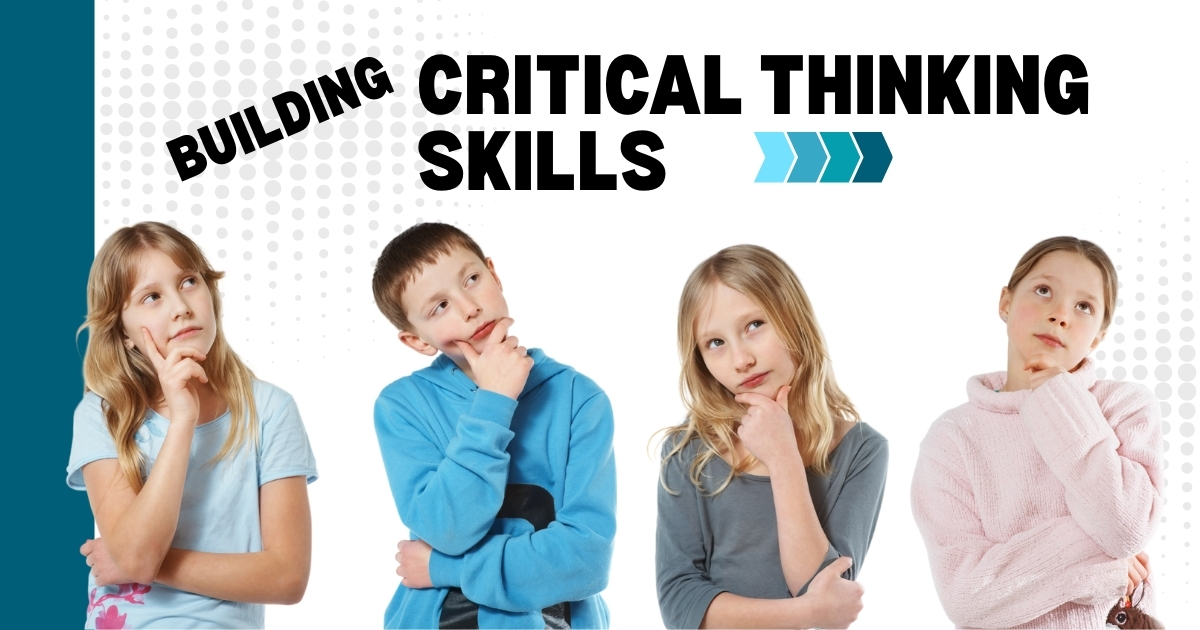One of the greatest benefits of homeschooling is the ability to nurture critical thinking at home. By tailoring your teaching methods and prioritizing problem-solving skills, you can prepare your child for real-world challenges far beyond academics. Developing these abilities is not just about answering questions; it’s about cultivating an inquisitive mindset and encouraging independent thought.
Critical thinking activities for kids are invaluable in fostering these traits. Whether through hands-on projects, strategic games, or guided discussions, homeschoolers can create opportunities for children to explore, analyze, and solve problems effectively.
Why Problem-Solving Matters In Homeschooling
Problem-solving is more than a skill; it’s a mindset. Children who develop this ability early are better equipped to make decisions, resolve conflicts, and adapt to new situations. Here’s why it works so well in homeschooling:
- Custom Learning Pace: Homeschooling lets you tailor teaching to your child’s unique pace. This means you can focus on deep thinking rather than rushing through checklists.
- Hands-On Learning: You have the freedom to incorporate real-world activities like cooking, budgeting, or nature observations to strengthen problem-solving skills.
- Safe Space for Failure: At home, kids can experiment and make mistakes without fear of harsh consequences, enhancing their ability to learn through trial and error.
- Parent-Child Collaboration: You can actively guide their thinking process, modeling critical thinking strategies and helping them refine their approach.
How To Develop Critical Thinking At Home
If you’re homeschooling, there are countless ways to encourage your child to think critically. Here are some tried-and-true methods, along with activities to get started:
Encourage Open-Ended Questions
Critical thinking thrives on curiosity. Instead of giving answers outright, ask your child questions that require deeper thought. Examples include:
- “What do you think would happen if we tried X?”
- “Why do you suppose this didn’t work?”
- “What are some other ways we could solve this problem?”
This type of questioning sparks analytical thinking and inspires debate about ideas.

Create Problem-Solving Scenarios
Put your child in hypothetical situations where they need to solve a problem. For example:
- Plan a day trip on a budget. Have your child calculate costs, look up transportation options, and decide how to allocate resources.
- Build a homemade bridge using craft supplies. Test the design with small weights and troubleshoot weak points.
- Role-play real-life situations like negotiating a disagreement or planning a community event.
Play Strategy Games
Games are an excellent way to sharpen critical thinking and problem-solving skills. Some great choices include:
- Chess (or beginner-friendly variants) for strategic planning
- Sudoku and other logic puzzles for organizing thoughts
- Cooperative board games like Pandemic, where players solve problems as a team
Structured games like these promote focus, decision-making, and teamwork, making them perfect for homeschool lessons.
Hands-On Activities That Cultivate Critical Thinking
Not all lessons look like worksheets or textbooks. These hands-on activities center on engaging kids in meaningful challenges that promote skill-building and creativity.
Cooking Challenges
Cooking is a fantastic way to teach your child to think critically. Assign them a task like preparing a meal with specific ingredients or doubling a recipe. They’ll need to:
- Follow instructions
- Manage time
- Calculate measurements
- Solve problems (like missing ingredients)
Cooking involves both logic and practical skills, making it ideal for critical thinking development.
Science, technology, engineering, and math (STEM) challenges are goldmines for problem-solving activities. Try these:
- Build a water filter using household items, encouraging your child to think about design and functionality.
- Test out an egg-drop challenge. Have your child engineer a container to protect an egg from breaking when dropped from a height.
- Create a simple circuit with batteries, wires, and a light bulb to explain how electricity works.
These exercises stimulate inquiry and require kids to experiment, analyze, and adjust their thinking.
Escape Room Puzzles
Design a homeschool escape room or scavenger hunt where kids must solve clues to reach the final goal. Clues can include riddles, math equations, or patterns. These activities promote:
- Creative thinking
- Logical reasoning
- Collaborative problem-solving if done with siblings
Making it fun keeps learners engaged while strengthening critical thinking.
Daily Practices That Encourage Critical Thought
Aside from structured activities, there are small, everyday habits you can integrate into your homeschooling routine to reinforce critical thinking skills.
Journaling
Ask your child to keep a journal where they reflect on daily events, decisions, or even fictional scenarios you pose. Prompts could include:
- “What problem did you solve today, and how?”
- “If you could invent something to help people, what would it be?”
- “What would you do differently if X happened again?”
Writing encourages self-reflection and clarity in reasoning.
Reading with Analysis
When reading stories or articles, encourage your child to think critically about the material by asking:
- What is the main idea?
- What problem do the characters face, and how do they solve it?
- How else could this story have ended?
This encourages analytical skills while building comprehension.
The Role Of Parents In Modeling Critical Thinking
Parents play a crucial role in fostering critical thinking at home, not just by teaching but by modeling the behavior themselves. Children often emulate how adults solve problems, so showing your own thought process can be immensely valuable.
For example, if you encounter an issue like a broken appliance, walk through your reasoning out loud:
- Identify the problem (e.g., the washing machine isn’t starting).
- Research possible causes (e.g., is it unplugged? Is there power?).
- Test solutions and explain why some work or don’t.
This real-world demonstration teaches problem-solving in a natural, relatable way.
Additionally, discuss your decision-making process in everyday contexts, such as planning grocery lists, organizing schedules, or working on personal projects. These discussions give kids a framework to approach challenges systematically.
Fostering Independent Problem-Solving
While homeschooling offers the chance for close guidance, give your child the freedom to tackle certain problems independently. Over time, this will build their confidence and resilience.
Tips for encouraging independence include:
- Setting Challenges: Encourage your kids to work on small tasks alone before asking for help. Problems like organizing their study area or creating a timeline for assignments are good starting points.
- Providing Tools: Teach them to research answers online, look through reference books, or sketch out their ideas visually to better understand a problem.
- Reflecting on Outcomes: Whether they succeed or need some adjustment, ask them to explain their process and what they might change next time.
Creating a balance between guidance and independence is key for homeschooling success.
Critical Thinking in Everyday Life
Critical thinking activities for kids don’t have to be limited to academics. Everyday situations are filled with opportunities for problem-solving and growth. Examples include:
- Budgeting Weekly Allowance: Teach kids to allocate money wisely by planning savings, spending, and charitable donations.
- Pet Care Responsibilities: Assign tasks like scheduling walks or creating a feeding plan. This builds accountability and organizational skills.
- Outdoor Exploration: Take nature hikes and encourage kids to identify plants, track animal prints, or create maps.
These real-life experiences teach valuable lessons that go far beyond schoolwork, equipping kids with tools for life.
Building critical thinking skills through problem-solving activities is one of the most meaningful gifts you can give your homeschooler. By incorporating open-ended questions, practical tasks, and everyday challenges, you not only engage their minds but also prepare them for lifelong decision-making. With these approaches, you’re fostering an environment that nurtures creativity, logic, and resilience all at once. Critical thinking is more than a skill to teach; it’s a foundation for success.





